How to use Binoculars
Introduction
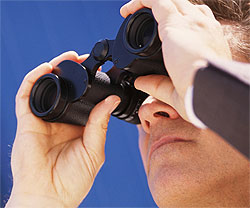 Things that we do often or regularly become second nature and we do them without even thinking about it. It is because of this that I probably took it for granted that everyone would just know how to use binoculars and so I never really thought about writing an article for BBR about the subject.
Things that we do often or regularly become second nature and we do them without even thinking about it. It is because of this that I probably took it for granted that everyone would just know how to use binoculars and so I never really thought about writing an article for BBR about the subject.
However that all changed recently: whilst watching a wildlife show on television, I noticed a clip where a woman lifted a pair of grimy binoculars to her eyes and held them in completely the wrong position and place.
This got me thinking that unless you have been told or shown how to do it correctly, there is no inherited or instinctive way of knowing how to use them correctly. So whilst it is simple, it is an important question to address as you want to spend as much time as possible viewing your chosen subject in the best and most stable way possible, and as little time as absolutely necessary fiddling with your binoculars trying to get it right.
Knowing your Instrument
Like learning anything new, in the beginning it can feel daunting or perhaps in this case not daunting, but just a little strange or awkward at first, depending on just how familiar you are with your binoculars.
First up, you will probably have your binoculars in some sort of carry case. This often has a shoulder strap (that may or may not be already attached) and should be just long enough to sling the case over one shoulder. Inside the bag is the binoculars and usually a small cleaning cloth (to be kept in a sealed plastic bag to keep it as clean and dirt free as possible).
Next, the binoculars. These will almost always have a neck strap, lens caps for the two objective lenses (some remain attached to the instrument even when opened – see image below), and lens caps (rain-guard) for the two eyepiece lenses that can usually be attached or threaded through your neck strap if you wish.
The left side barrel connects to the right one by a single or sometimes in the case of an open hinge body design, two central pivots (as with the example Snypex Knight D-ED binocular above and below). You should adjust the pivot(s) so that the two eyepieces are correctly spaced to match the distance between your eyes (this is known as the IDP or Interpupillary Distance Setting).
Starting on the right side of my binoculars in the image above, the usually (but not always) larger objective lenses are at the front (these collect the light), and the eyepiece lenses are at the rear (these are the ones you look through).
Then there is the pivot/hinges and then most often, incorporated in the center of the hinge is the focus dial/wheel (see image below). Turning this moves the mechanism in both of the eyepieces simultaneously and adjusts the focal distance.
Note: Some fixed focus binoculars will not have a central focus wheel at all.
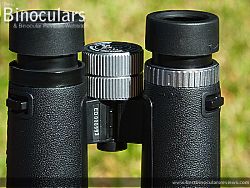 Then usually located on the right eyepiece is the diopter dial/ring (shown in image on the right) that is used for calibrating your instrument to match your particular vision (more on this later).
Then usually located on the right eyepiece is the diopter dial/ring (shown in image on the right) that is used for calibrating your instrument to match your particular vision (more on this later).
How to Focus Binoculars
You may wonder why I did not put this section first. Now we are familiar with where to find every part of the binoculars, it is much more easy to use them more quickly. It only takes a few steps and with a little practice you will be doing it without so much as a second thought.
The purpose of binoculars is to allow you to see a distance object more clearly by making them look larger, as if you were seeing them from much closer. This is only worthwhile if you can see the image in clear focus.
Take your binoculars out of the case, and put the neck strap on. Remove the lens caps (all four) and if not tethered to your instrument, put them safely into the case. This way, when you put binoculars away, you will know where the lens caps are! Choose a stationary object to focus on and lift the binoculars to your eyes. Bend the central pivot/hinge until it matches the distance between your eyes and you only see a single image.
Then, the first time you use your binoculars, you will want to calibrate it to match any differences in vision between your eyes:
- Being careful not to touch the glass, cover the right objective lens with your hand (or close your right eye), and turn the main focus dial until the image you see with your left eyes is sharp
- Now cover the left lens with your hand (or close your left eye) and this time instead of turning the focus wheel, turn the diopter dial instead (usually located near the right eye-piece and shown on the small image above right) until the image is sharp
- Finally look through the binoculars with both eyes. The image should be perfectly clear. From now on, all you need to do is turn the central focus wheel to focus on objects at different distances until the image is nice and sharp
You can find more information and a more detailed explanation on this in our guide on How to Focus Binoculars & Calibration, which also discusses different types of focus wheels and diopters.
Now we have looked at how to adjust binoculars it is worth noting that once the diopter is correctly adjusted for your eyesight only the focus dial now needs to be used, and you can keep both of your eyes open.
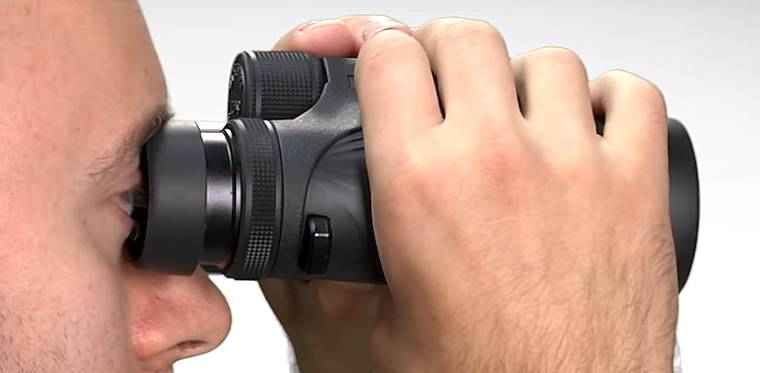
How to hold binoculars
But how should you hold your binoculars? Does it matter? This one is mostly down to what you find most comfortable for you.
I like to hold them two-handed with both hands evenly spaced and wrapped around each barrel, I tuck my elbows in slightly to my body. This provides a fairly stable platform for me. Some people also press their thumbs against the cheekbone, which I find uncomfortable.
Also note that the grip will change a little depending on the exact size and style of your instrument, but in general this principal holds true. For example, in the image below I am only using one hand because I am taking a photo with the other, but the grip is also slightly different because these are more compact binoculars and thus your thumbs and fingers will more easily wrap around the body. Indeed if you have larger hands, you may find it easier to hold small compact bins with just the tips of your fingers rather than wrapping your hand completely around them.
However, once I had written this, I did a little more research to see if others did things a little differently and came across this article written by Strathspey of Scotland that included a couple of images that illustrate (see below) how they suggest you should hold your bins.
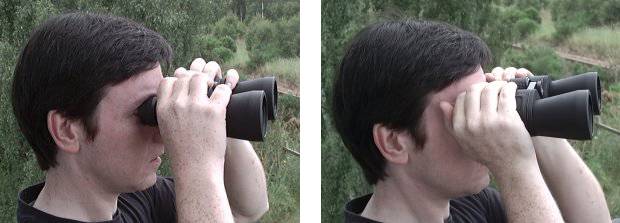
Image Credit: Strathspey Binoculars
I personally prefer to hold my bins in the way that they deem to be the wrong way (image on the left)! However as everyone is different it may be worth just experimenting a little until you find the position that is most comfortable for you. The most important considerations to keep in mind are that you are comfortable holding them, you can keep the image nice and steady and that it is easy for you to reach and adjust the focus wheel whilst still maintaining a steady view.
Note: Some larger pairs of binoculars are best used on a tripod, as explained in this guide on Binocular Tripod Adapters.
Aiming
A technique I find invaluable, which I learned from an amateur photographer, is how to find your subject. If possible find your subject with your naked eye. While keeping looking at the subject bring the camera (or in our case binoculars) to your eye. This means your subject will already be there and lined up.
If you cannot find your subject this way, then choose something close by – but easier to find. Like the corner of a tower where a peregrine is perched. Once you have the tower in your binoculars it is fairly easy to track to where the bird is.
For more details, take a look at this BBR article on Aiming your Binoculars.
What else to consider
If you wear glasses then you may need to consider adjusting the eyecups to alow of the extra space created by the frame and lenses on them. For more, check out the BBR guide on How to use Binoculars with Glasses.
In winter, it is worth considering wearing gloves. Please make sure that you have checked that you can hold and adjust the binoculars while wearing them, as thick gloves that need to be taken off can get in the way more than they help.
The magnification of your binoculars will affect how easy it is to practice how to use your binoculars. It is easier to learn while using less powerful binoculars. If you have yet to buy your binoculars read our guide on What To Look For When Buying Binoculars.
You can learn more about differences in magnification in this guide to How a Binoculars Magnification affects Stability, Field of View & Image Brightness.
Look after your binoculars
Remember how I carefully got my binoculars out of their soft case? Once you have finished using binoculars it is worth replacing all of the lens caps, and stowing them safely in their case. This means that on your next trip you can quickly use them again with no surprises.
Between trips keep your lenses clean. The lady in the television clip should have read our guide on How to Clean Binoculars & Their Lenses.
Summary
Learning how to use binoculars and adjust them is not difficult and after a few times will become natural and you won’t even think about it.
- Adjust the pivot (central hinge) until it matches the distance between your eyes and you only see a single image
- Pick an object, cover the right lens, turn the focus dial until the image is sharp
- Cover the left lens, turn the diopter until the image is sharp
- Look through the binoculars with both eyes, the image should be perfectly sharp and from now on all you need to do is adjust the central focus wheel to get a sharp image at different distances
- Keep you binoculars properly stowed, and look after them.
Please feel free to contact me if you have any further questions.

 Article | Posted by Derek Sergeant
Article | Posted by Derek Sergeant 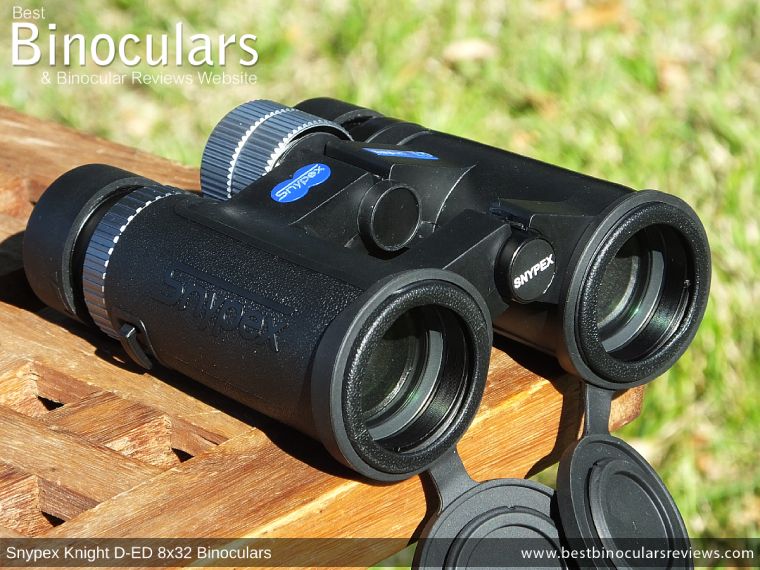
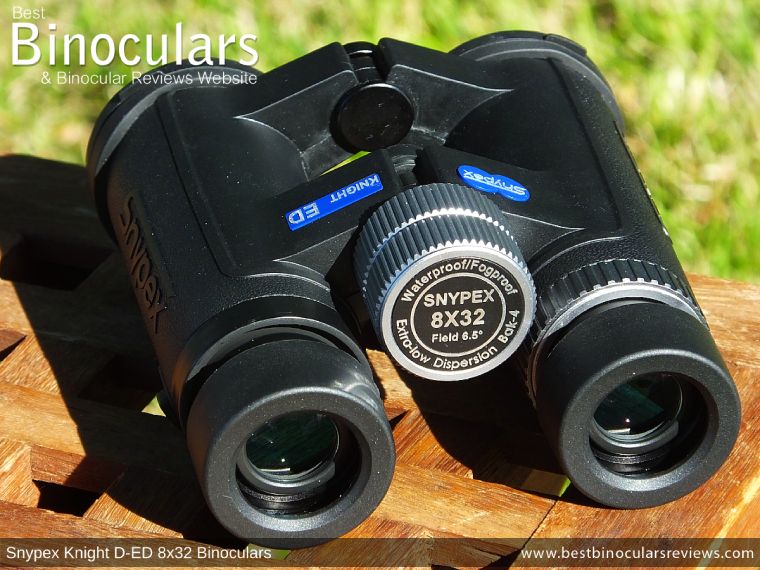
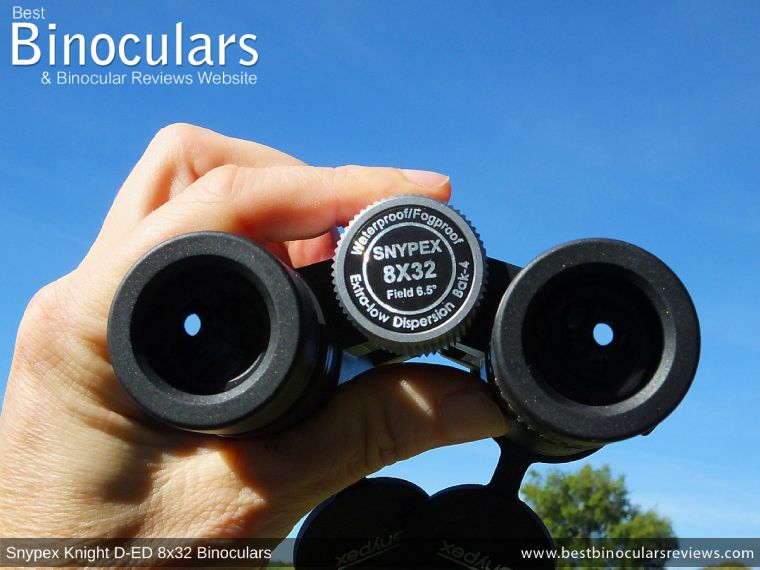

 Categories:
Categories:  Tags:
Tags: 
